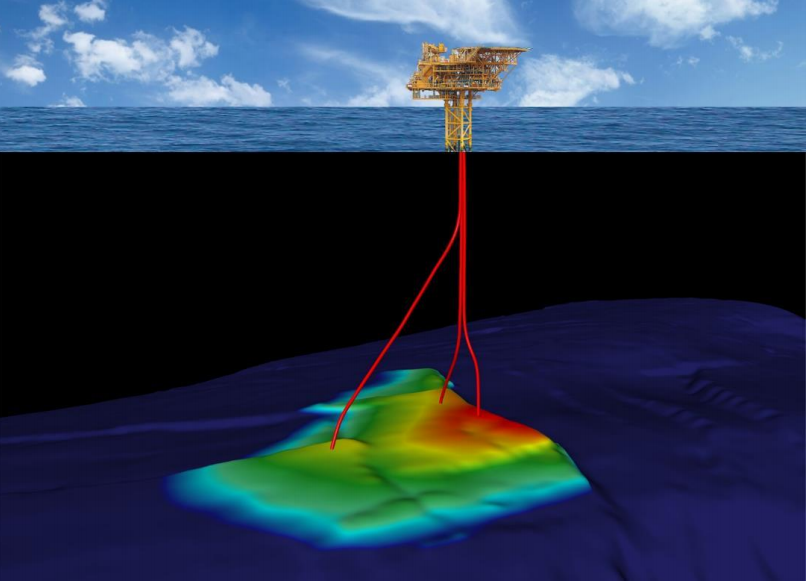TARANAKI BASIN – NEW ZEALAND
The Taranaki Basin is located along the west coast of the North Island in New Zealand. The basin covers an area of about 115,000 square kilometres with most of the area being offshore.
In New Zealand’s Taranaki Basin, Beach is operator of the Kupe Natural Gas Processing Plant which produces gas from the Kupe Field, situated approximately 30 kilometres off the New Zealand North Island.
Kupe is a critical part of New Zealand’s energy infrastructure. At peak, the gas produced from the Kupe field was predicted to meet about 15 percent of New Zealand’s annual natural gas demand and 50 percent of New Zealand’s LPG demand.

Kupe Production Station, New Zealand

Beach’s Kupe project consists of three production wells up to 3.8 kilometres in depth as well as the Kupe unmanned offshore platform.
A 30 kilometre subsea pipeline brings raw natural gas and liquids from the platform to shore, where it is processed at the onshore production station.
Once processed, an 11.7 kilometre sales gas pipeline takes natural gas from the production station to Kapuni where it is injected into the North Island transmission network.
Condensate is transported via road and shipped internationally, while LPG is transported via road for the local market.
Kupe Phase 2 DEVELOPMENT Drilling programme
The project has obtained the required regulatory approvals from the Environmental Protection Authority (EPA) under the Exclusive Economic Zone (EEZ) and Continental Shelf (Environmental Effects) Act 2012 to drill one development well within the existing Petroleum Mining Licence (PML 38146).
Phase 2 development of the Kupe Field has always been in the field life plan. Drilling activities commenced in Q4, 2023. The Valaris 107 Mobile Offshore Drilling Unit (MODU) is now in position, cantilevered over the Kupe wellhead platform, within the offshore Taranaki Basin, located approximately 30 km from the nearest land.
The Kupe Phase 2 Development Drilling Programme will further develop the Kupe Field, maximise production, and support New Zealand’s energy security.
INFORMATION SHEET – November 2023
Program Updates
Kupe Phase 2 Development Drilling Program November 2021 Update

Kupe Platform next to Valaris 107 Mobile Offshore Drilling Unit

Important information
- Safety and environmental sustainability are priorities for Beach, and only proven technologies are used in our operations
- Beach does not undertake any fracture stimulation (fracking) activities in the Taranaki Basin
- Beach is a key employer in the region and supports a number of local community programs, including the Taranaki Community Rugby Trust

Kupe Production Station, New Zealand
GEOLOGY OF THE TARANAKI BASIN
The Taranaki Basin was formed in the Late Cretaceous due to rifting associated with the breakup of Gondwana and the separation of New Zealand and Australia. This extension created a series of half-graben depocentres that were progressively filled with non-marine syn-rift strata followed by later marine transgression.
The basin was part of a large passive margin setting during the Paleocene and Eocene that culminated in maximum marine transgression in the Oligocene with widespread limestone deposition.
Tectonic compression and major uplift occurred in the Miocene and parts of the Taranaki Basin were inverted. The Pliocene to Recent has featured rapid progradation of the shelf and the development of thick clinoforms.
The main source rocks in the Taranaki Basin are Late Cretaceous to Paleocene-aged coals and coaly shales.
These source rocks are buried unevenly across the basin and produce oil, gas and condensate depending on their depth of burial and thermal maturity. Reservoir and seal units are present throughout the Late Cretaceous to Miocene section and stacked pay intervals are common.
CONTACT US
Beach has a Community Relations Manager based in New Plymouth to answer any questions the community may have:
Vicki Meijer
Community Relations Manager – New Zealand
community@beachenergy.com.au
For more information on the petroleum industry regulatory processes in New Zealand please visit: